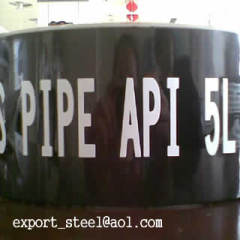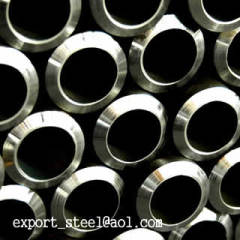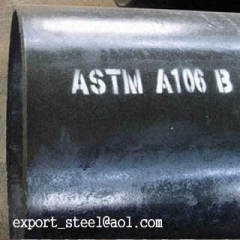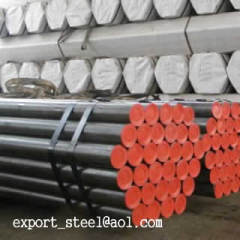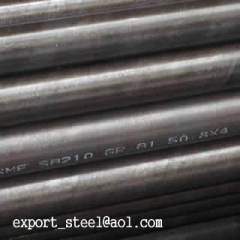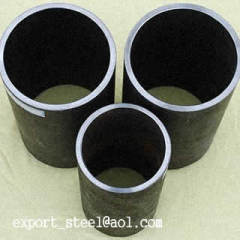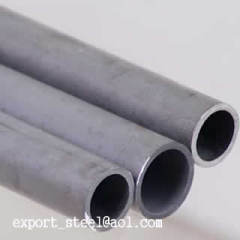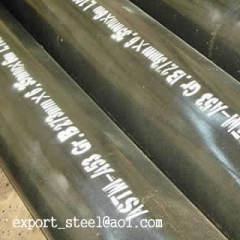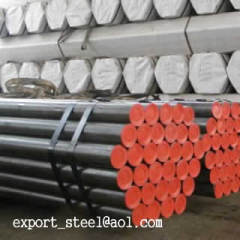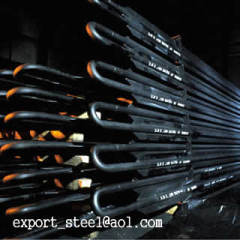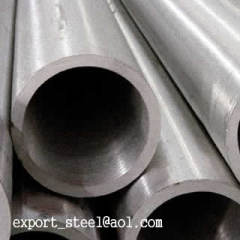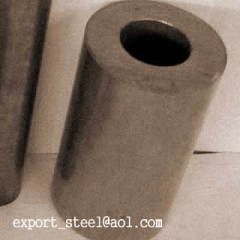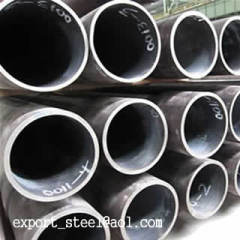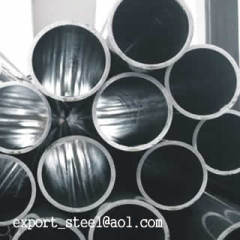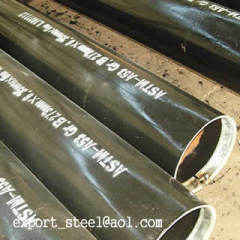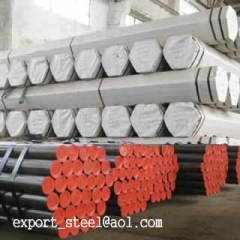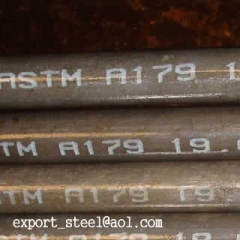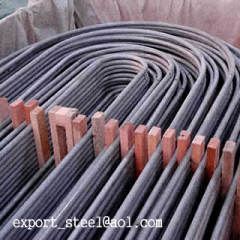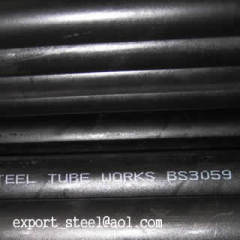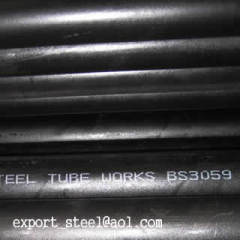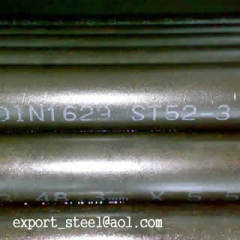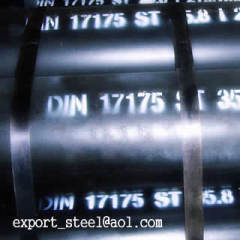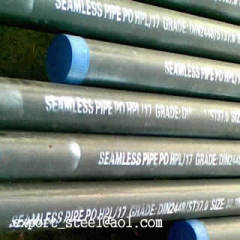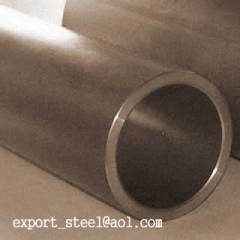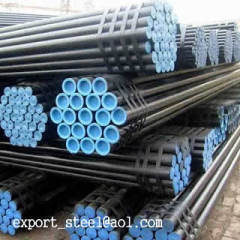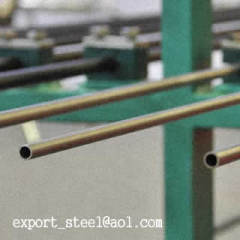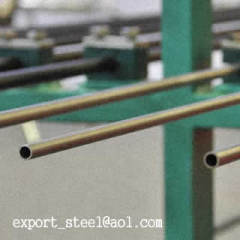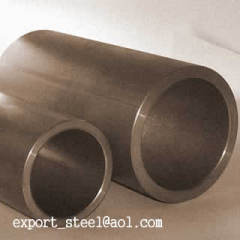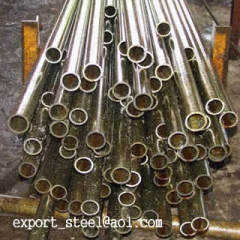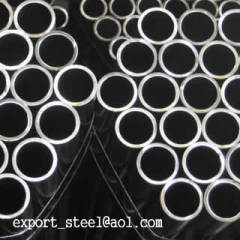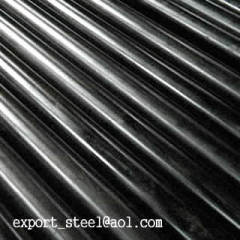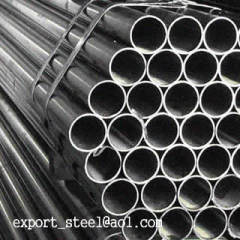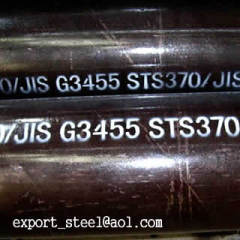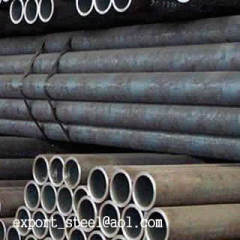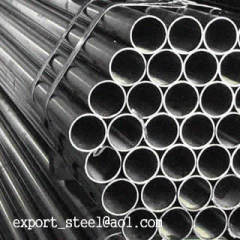
|
Yosin Steel Pipe Co., ltd.
|
Oil Country Tubular Goods (OCTG)
| Price: | 1000.0~3000.0 USD |
| Payment Terms: | T/T,L/C,D/P |
| Place of Origin: | Shanghai, China (Mainland) |
|
|
|
| Add to My Favorites | |
| HiSupplier Escrow |
Product Detail
Oil country tubular goods (OCTG) is a family of seamless rolled products consisting of drill pipe, casing and tubing subjected to loading conditions a
Oil Country Tubular Goods (OCTG)
casing, Casing pipe, drill pipe, OCTG, pipe lines, Seamless pipe, Seamless tube, Tubing
Oil country tubular goods (OCTG) is a family of seamless rolled products consisting of drill pipe, casing and tubing subjected to loading conditions according to their specific application. (see Figure 1 for schematic of a deep well):
- Drill pipe is heavy seamless tube that rotates the drill bit and circulates drilling fluid. Pipe segments 30 ft (9m) long are coupled with tool joints. Drill pipe is simultaneously subjected to high torque by drilling, axial tension by its dead weight, and internal pressure by purging of drilling fluid. Additionally, alternating bending loads due to non-vertical or deflected drilling may be superimposed on these basic loading patterns.
- Casing pipe lines the borehole. It is subject to axial tension by its dead weight, internal pressure by fluid purging, and external pressure by surrounding rock formations. Casing is particularly exposed to axial tension and internal pressure by the pumped oil or gas emulsion.
- Tubing is pipe through which the oil or gas is transported from the wellbore. Tubing segments are generally around 30 ft [9 m] long with a threaded connection on each end.
Typical OCTG manufacturing processes include (all dimensional ranges are approximate)
- Continuous mandrel-rolling process and the push bench process for sizes between 21 and 178 mm OD.
- Plug mill rolling for sizes between 140 and 406 mm OD.
- Cross-roll piercing and pilger rolling for sizes between 250 and 660 mm OD.
These processes typically do not allow the thermomechanical processing customary for the strip and plate products used for welded pipe. Therefore, high-strength seamless pipe must be produced by increasing the alloying content in combination with a suitable heat treatment such as quench & tempering.
Meeting the fundamental requirement of a fully martensitic microstructure even at large pipe wall thickness requires good hardenability. Cr and Mn are the main alloying elements used to produce good hardenability in conventional heat-treatable steel. However, the requirement for good sulphide stress cracking (SSC) resistance limits their use. Mn tends to segregate during continuous casting and can form large MnS inclusions that reduce hydrogen induced cracking (HIC) resistance. Higher levels of Cr can lead to formation of Cr7C3 precipitates with coarse plate-shaped morphology, which act as hydrogen collectors and crack initiators. Alloying with Molybdenum can overcome the limitations of Mn and Cr alloying. Mo is a much stronger hardener than Mn and Cr, so it can easily recover the effect of a reduced amount of these elements.
Traditionally, OCTG grades were carbon-manganese steels (up to the 55-ksi strength level) or Mo-containing grades up to 0.4% Mo. In recent years, deep well drilling and reservoirs containing contaminants that cause corrosive attack have created a strong demand for higher strength materials resistant to hydrogen embrittlement and SCC. Highly tempered martensite is the structure most resistant to SSC at higher strength levels, and 0.75% is the Mo concentration that produces the optimum combination of yield strength and to SSC resistance(1).
| Grade | YS | TS | HRC max. | App. | ||||||||
| ksi | Chemical Analysis wt.% | |||||||||||
| min. | max. | min. | C | Si | Mn | P max. | S max. | Cr | Others | |||
| C75 Type 2 | 75 | 90 | 95 | - | A | 0.43 max. | 0.45 | 1.50 max. | 0.030 | 0.030 | - | - |
| L80SS | 80 | 95 | 95 | 23 | B | 0.15 – 0.35 | 0.35 | 1.20 | 0.020 | 0.010 | 0.80 – 1.60 | Mo max. 1.10 Ni max. 0.20 |
| C90 Type 1 | 90 | 105 | 100 | 25.4 | C | 0.35 max. | - | 1.00 max. | 0.020 | 0.010 | 1.20 max. | Mo max. 0.75 Ni max. 0.99 |
| C95SS | 95 | 110 | 105 | 25.4 | B | 0.15 – 0.35 | 0.35 | 1.20 max. | 0.020 | 0.010 | 0.80 – 1.60 | Mo max. 1.10 Ni max. 0.20 |
| T95 Type 1 | C | 0.35 max. | - | 1.20 max. | 0.020 | 0.010 | 0.40 – 1.50 | Mo 0.25 -0.85 Ni max. 0.99 | ||||
| Q125 Type 1 | 125 | 150 | 135 | - | 0.35 max. | - | 1.00 max. | 0.020 | 0.010 | 1.20 max. | Mo max. 0.75 Ni max. 0.99 | |
A: Tubing & casing with controlled yield range for sour well service | ||||||||||||
B: Tubing & casing with controlled yield range for special sour well service | ||||||||||||
C: High strength tubing & casing with controlled yield range for service in hydrogen sulphide environments | ||||||||||||
Table 1: Specifications of selected OCTG grades (according to API 5CT).
This is reflected in the list of Mo-containing low-alloy API standard grades in Table 1 above. Mo alloying is not strictly necessary at or below the 75-ksi strength level, while the grades with strengths between 75 ksi and 125 ksi require Mo contents up to 1.10%.
Alloying concepts for the C90 and C95 grades used in sour service are based on 0.3%C-0.35%Si-1%Cr with reduced Mn (0.75% max.) and Mo additions in the range of 0.2 to 0.4%. For more severe sour conditions, the Mo content is increased to a level of 0.4 to 0.8%. Boron addition was initially necessary for heavy-wall pipe, but it can be avoided by the introduction of more powerful quenching units, particularly those using a combined laminar cooling from outside and jet flow cooling inside the pipe.
The first C110 grades for sour service, with SSC resistance of 0.8xSMYS (Specified Minimum Yield Strength) as threshold stress according to NACE TM0177, were developed in the late 1980s. The alloy concepts are based on a high carbon content (0.45%), 1.0%Cr, reduced Mn (<0 and Mo Microalloying with Nb V and Ti is also necessary to provide good tempering resistancep>
A more recent concept for C110, particularly designed for heavy-wall pipe including those needed for coupling stock, works with lower carbon content (~0.32%), further reduced Mn additions (≤0.5%) and Cr contents of about1.0%. For the heaviest-wall pipe, the Mo content is raised to 0.85% in combination with microalloy additions of Nb (0.035%) and V (0.05%). The tempering temperature in this case is 690°C. In an attempt to improve that material further, the Nb content was raised to 0.075%. Indeed, stress vs. time-to-failure tests according to NACE TM0177 revealed a better SSC resistance of the high-Nb variant. Due to the comparably low carbon content and the absence of boron, the material has good toughness with a ductile-to-brittle transition temperature (DBTT) below -40°C. The fine prior austenite grain size provided by Nb microalloying also contributes to this favourable behaviour.
The latest development is a 125 ksi SSC-resistant pipe. The alloy's higher yield strength compared to C110 allows it to withstand higher stratum pressures and its own dead weight in similar applications.
Nevertheless, it has excellent SSC resistance, the result of sophisticated metallurgical design. The product already has been applied successfully in sour gas wells at depths between 4,000 and 6,000 meters in the North Sea and the Caspian Sea. The alloying concept is optimized for good SSC resistance in such a way as to prevent hydrogen penetration and local accumulation in the steel:
- Manganese is added only to the minimum necessary for quench-hardenability (≤0.5%) and chromium is decreased to 0.5%, which prevents formation of M23C6 (M=Fe, Cr, Mo) precipitates that could be crack initiation sites.
- Molybdenum decreases the steel's capacity to adsorb hydrogen by assisting the formation of fine, dense iron sulphide on the surface and by increasing the hydrogen overvoltage. The Mo content is limited to 1.0%, as higher additions can promote formation of acicular Mo2C precipitates that constitute initial SSC sites. The formation of complex MC-type carbides (M: V & Mo) avoids the acicular Mo2C morphology when a sufficient amount of vanadium is added.
- A small addition of boron (≤20 ppm) assists Mo in boosting the quench hardenability. Both Mo and B tend to reduce P segregation to grain boundaries by reducing P diffusivity and by occupying prior austenite grain boundary sites. The obstruction of P segregation helps to avoid intergranular fracture.
- Normal steelmaking practice adds Al and Ca during melting and refining to eliminate O and S. The resulting nonmetallic inclusions can grow to several tens of microns in size. These inclusions are highly detrimental to SSC resistance, because they initiate pitting corrosion on the surface in sour environment and act as crack initiation sites in the bulk. There is yet no practical way to reduce the size of these inclusions.
- An appropriate addition of niobium and titanium, however, can form a Ti-Nb carbonitride shell around the detrimental Al-Ca oxysulphides, preventing further growth and direct contact with the sour environment. The Ti-Nb carbonitride simultaneously ties up residual nitrogen from the steel matrix to guarantee the hardenability effect of boron.
In summary, molybdenum plays an indispensable role in the production of modern high-performance OCTG steel grades used in sour environments.The most prominent effects of molybdenum in that respect are:
- Excellent hardenability without the negative effects on SSC resistance of other hardening elements.
- Good tempering resistance, and a synergy with niobium to provide a strong, well-tempered martensite.
- A reduction of hydrogen intake and permeation.
- Obstruction of phosphorous segregation to grain boundaries, thereby eliminating intergranular fracture.
Related Search
Goods Shelf
Sporting Goods
Country Flag
Octg Tubing Pipe
Country Bedding Sets
Country Kitchen Cabinets
More>>


